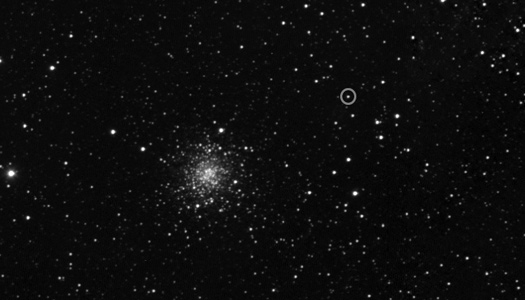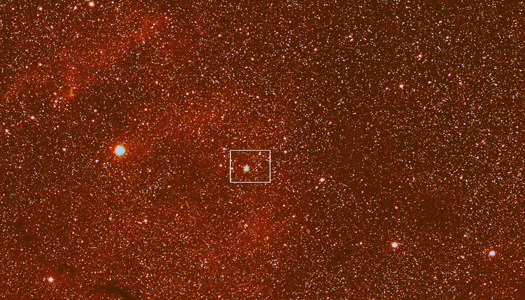The European Space Agency’s comet-chasing spacecraft has imaged its destination for the first time since waking up from 957 days of hibernation.

ESA 2014 MPS for OSIRIS-Team MPS/UPD/LAM/IAA/SSO/INTA/UPM/DASP/IDA
See that little circle around a white dot? That dot is the comet that Rosetta’s been chasing around the solar system for 10 years.
In this narrow-angle view, Comet 67P/Churyumov-Gerasimenko looks like one more bright dot in a field of stars, but that’s because Rosetta is still months away from reaching it. This is the first image take since Rosetta woke up from electronic hibernation back in January 2014.
This image was taken on March 21st by the spacecraft’s OSIRIS narrow-angle camera. OSIRIS’s wide- and narrow-angle cameras are designed to obtain hi-res images of Comet 67P/Churyumov-Gerasimenko’s nucleus once the spacecraft rendezvouses with the comet. OSIRIS will be the eyes that scout out a landing site for Rosetta’s robotic cargo: a lander named Philae (FEE-lay).

Rosetta and Philae are expected to arrive at their destination in August, but between now and then, they have a very busy schedule. Part of that will be scouting out a landing site for Philae, because scientists have no image of the comet’s surface and therefore could not pick one out beforehand. Rosetta’s approach in these next few months will allow it render the 4-kilometer-wide (2.5-mile-wide) ice ball to an image over 2,000 pixels across, resolving surface features.
The landing site itself has to be chosen in a matter of weeks. This means observing the comet’s orientation, spin, landmarks, and other basic characteristics in order to map its surface well enough to identify a safe place for Philae touchdown. Philae will then anchor itself down (the comet has extremely low gravity) to do some in-situ measurements on the icy surface.
Should everything go according to plan, Philae’s deployment sometime in August will make history. It will be the first man-made object ever to land softly on a comet’s nucleus. After dropping its payload, Rosetta will escort the comet on its long journey towards the Sun, observing firsthand how a chunk of ice and rock makes the transition from a quiet space boulder to a bright, tailed comet.
 0
0









Comments
You must be logged in to post a comment.